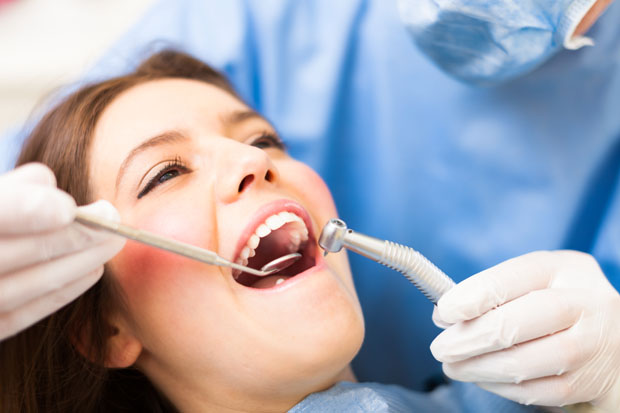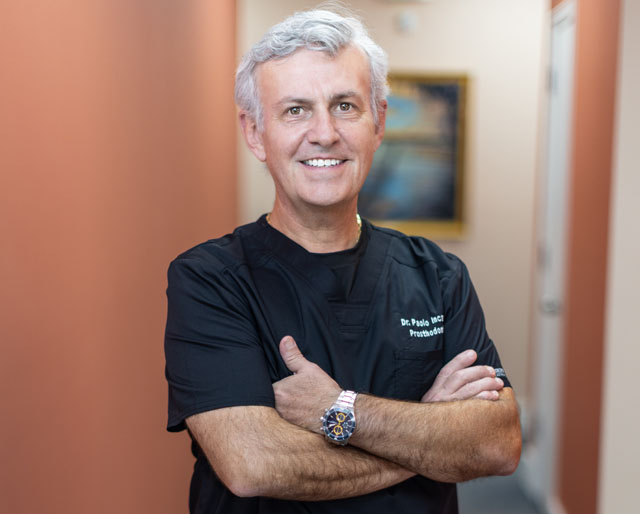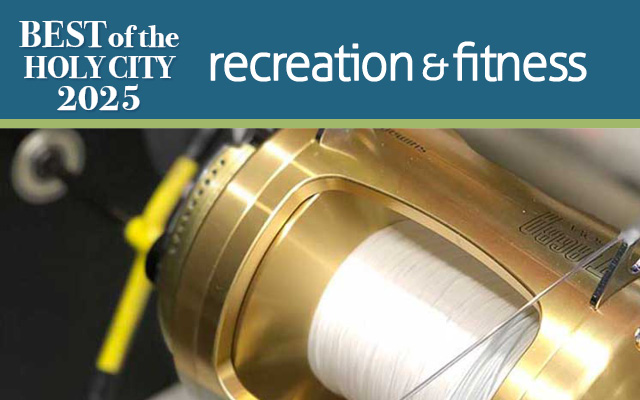The Importance of Dental Care
07 May 2016
Developing a lifelong dental regimen is good for your overall health
By SYBIL FIX

Prevention, prevention, and more prevention. That is the operative word in dental care, a world whose costs remain prohibitive for a great number of Americans, but that, for those who do see doctors routinely, is increasingly part of a regular health regimen.
Even for the uninsured—and most people do not have dental insurance—the cost of a visit to the dentist twice yearly with cleaning and X-rays remains the best and strongest way to eliminate further dental work and reduce lifelong expenditure on teeth.
“We are the only profession that could put ourselves out of business,” said Dr. Virginia Gregory, a Mt. Pleasant general dentist in practice some 30 years. Over the course of her lifetime she has seen the practice evolve from one of emergency to one of maintenance and prevention, with care for one’s teeth taking a seat right up there with an annual general checkups.
“I have patients who are in their 40s who have never had a cavity. It’s a shift in the population and we are very fortunate to have such good preventive care for Americans.”
Certainly, we are a long way from a cavity-free world. Technically, bacteria in the mouth can be hard to control and a small cavity here and there can occur to the most regular of patients, said Dr. Rebecca Ward, a pediatric dentist with Children’s Dentistry of Charleston.
“But with regular care it results in a simple filling instead of an abscess or an extraction,” she said.
Technology and evolutions in technique have made the whole experience of dental care easier and less traumatic, dentists say—but it’s particularly true if one develops the habit of going to see a dentist early on. Because of that, Ward believes in making children into lifelong patients by providing a nurturing and loving environment that encourages and rewards for visits.
“Getting children to be regular dental patients is key to success in lifelong dental care,” Ward said.
Still Too Few
The rates of dental care utilization or dental attendance—how many people see a dentist—goes up and down with income and, because of that, in years of economic downturn people tend to put dental care on the back burner, unless it’s an emergency.
According to the Pew Charitable Trusts, in recent years fewer than half of working-age adults in America saw a dentist, and more than one-quarter had untreated tooth decay. For the working poor the figures are even more disheartening. Meanwhile, the number of working-age adults seeking dental care in hospital emergency rooms has risen over the past decade. For many, dental care is still an emergency.
Studies by the American Dental Association confirm these trends over the past few years, though they show that at least in the case of children, dental care utilization rates in 2013 (released in 2015) were the highest they had been in decades, at a sad 48 percent. We don’t know what the visits were for; besides, the other half may have never seen a dentist. The Affordable Healthcare Act promises to further increase access to dental care with dental plan marketplaces and, in some states, requirements for coverage of preventive services for children, such as cleanings and X-rays.
But every data point—and every conversation with a dentist—suggests that lifelong prevention is the best long-term strategy for keeping trouble visits to the minimum. Not only: it is critical to our overall health.
Dentists and dental associations continue to recommend two visits a year for cleanings and checkups. For children, visits should begin at the age of eighteen months; this helps the child become familiar with the process and the parents to understand the importance of early dental care. A positive series of first experiences promises to produce regular patients who will not develop big problems.
X-rays should begin sometime in early childhood, depending on the child, and be done every 6 to 18 months in adulthood, depending on the patient’s dental condition. New 3-D X-ray technology now allows for the earliest detection of the smallest of cavities, facilitating the earliest and least painful of treatments, said Dr. Lauren Callison of Pleasant Family Dentistry, a whole family dental practice in Mt. Pleasant. “Technology has made everything easier, and dental care is faster and easier.”
Treatment Options
In terms of treatments, new computer-assisted technology allow dentists to make crowns in-office now, making for fewer visits and speedier repairs; and new implant techniques and technology are making the old repetitive root canal a thing of the past.
“It used to be we’d throw money at a tooth over and over,” said Gregory. “Now we can replace it with an implant and it’s so much easier. They offer better solutions and a lot fewer heroics are being done on a single tooth.”
With implants, said oral surgeon Dr. Matt Barefoot of Barefoot Oral & Facial Surgery in Mt. Pleasant, “we can replace one tooth or multiple teeth much more easily ... and solve the problem in one day. It’s a lot less painful and a lot more efficient... They are really becoming the standard of care for failing teeth—the go-to thing.”
The understanding of the functionality of the teeth as it correlates to their long-term care and cleanliness is also growing, dentists say— for example, adjusting bad bites that can impair eating and speaking properly, or straightening crooked teeth that are hard to keep clean; or correcting an improper bite with braces or clear teeth aligners such as Invisalign. More attention is now paid to grinding and mandibular disorders that affect the longterm health of our teeth and our face overall.
Callison said she sees many patients whose development predated the braces generation, and now want their bite fixed and their teeth aligned. “It’s not too late ... and it helps everything function better,” she said.
But following a person’s dental development beginning in childhood—from nursing, even—is essential in detecting early problems and treating them earlier in the context of a growing body. In that regard, having a pediatric dentist is as important as having a pediatrician, Ward said.
Dental hygiene has evolved, too, with a greater understanding of the fact that periodontal health is directly related to overall health, including heart disease and immune diseases. Poor oral care has been tied to heart disease, stroke, arthritis, and diabetes; people who suffer from gum disease are twice as likely to develop coronary artery disease.
There should be no bleeding or puffiness in the gums; if there is, you should see a dentist.
“Gum health affects your whole body and dental health when you are young will affect your whole life,” Gregory said.
Getting one’s teeth cleaned comes with less scraping now and more ultrasonic and sandblasting agents; improved technique has made going to the hygienist easier, faster, and more comfortable. This helps make it easier on patients with an eye on lifelong dental care.
And certainly, now that people are living well into their nineties, it seems appropriate to make our teeth last that long, said Gregory.
Getting Pretty
Meanwhile the cosmetic dentistry field continues to expand with whitening and porcelain veneers, among other things, to get us the best smile possible. According to the ADA the smile remains the most important feature in a person, and dentists take pride in helping turn people’s lives around by giving them a bright white smile.
“We can take worn, chipped teeth and get everything looking nice and uniform now,” said Gregory, the bulk of whose work is cosmetic and who has had extensive training in cosmetic dentistry. “I love changing a person’s life and smile and their social interactions and confidence. I love doing that.”
In some ways dentistry overall is moving from treating decay—for pain—or pulling teeth that are beyond repair to being part of our overall understanding of health and the maintenance of our bodies. Or at least that’s the hope.
“When people view it as part of their regular care and come regularly, they don’t have issues,” Callison said. “It’s just a boring checkup ... and it’s a good experience rather than a bad one.”
Dental Phobia: It’s really not so bad!
For those who don’t have it, it sounds like bad doctor’s office lore; but for some people dental phobia or anxiety is a real problem that keeps them away from the dentist, and can cause cumulative and serious dental issues.
Counterintuitively, the solution is, go to the dentist!!
“We have tons of patients with phobia. We try to keep it real friendly,” said Dr. Lauren Callison, of Pleasant Family Dentistry. “We start real slow and talk people through it.”
Most people develop phobia or acute anxiety through a bad experience or stories of bad experiences had by others, said Dr. Rebecca Ward, a pediatric dentist with Children’s Dentistry of Charleston.
“You’d be shocked at how many kids come in thinking that something terrible is going to happen from something they heard from a friend or a sibling,” said Ward, whose practice sees many anxious children and children with special care needs.
Thing is, as fear perpetrates fear and you stay away from the dentist, ultimately you help create problems that will, in the end, be much worse than they need to be. “If you have an infection in your mouth and it causes infection elsewhere in your body, it can affect your overall health,” said Callison.
That, dentists say, is why you really need to go, and if you are a parent, please take your child!
“It’s really important to develop a dental home early and become familiar with the process,” said Ward. “Often phobia is found in people later in life because they didn’t have a good experience.”
Callison—and Ward, with children—say they start phobia-prone patients with a visit and a cleaning. A mere visit can assuage fears by showing that the staff is friendly, and the process is pleasant. They work slowly to make patients comfortable, to let them know what will happen, and to show them first-hand that the experience is not as bad as one might have imagined. And, if a patient needs it, they are happy to sedate as well.
Nothing bad will happen to you, and you will taste the benefits of a healthy mouth.
“We see people with an emergency because they don’t come regularly,” said Callison, “but if they come here for an exam, we can convert them into good patients.”
“Come in and we will make you comfortable,” she said reassuringly. “At least come for an exam and get a cleaning. We’ll start slow. We are used to it!”
Plus, remember the rewards, said Callison: overall good dental health creates a more positive view of the dentist, thus reinforcing good dental health.
“If you feel good about your smile it helps your overall health and well being, and you will be happier overall.”
Ward offers these tips to raise children with good teeth and free of dental phobia: Start brushing a child’s teeth as soon as they grow in so they become familiar with the process and develop a good habit; find a good pediatric dentist after the age of one and make him or her your dental home; learn how much toothpaste and fluoride to use; stay away from the juice or the bottle at night. And don’t perpetrate bad dentist lore.
“A lot of it is just the education of the parent,” said Ward.












